Best lens heaters 2025: Fight lens fogging with these essential astro accessories
Make lens-fogging a thing of the past with one of the best lens heaters.
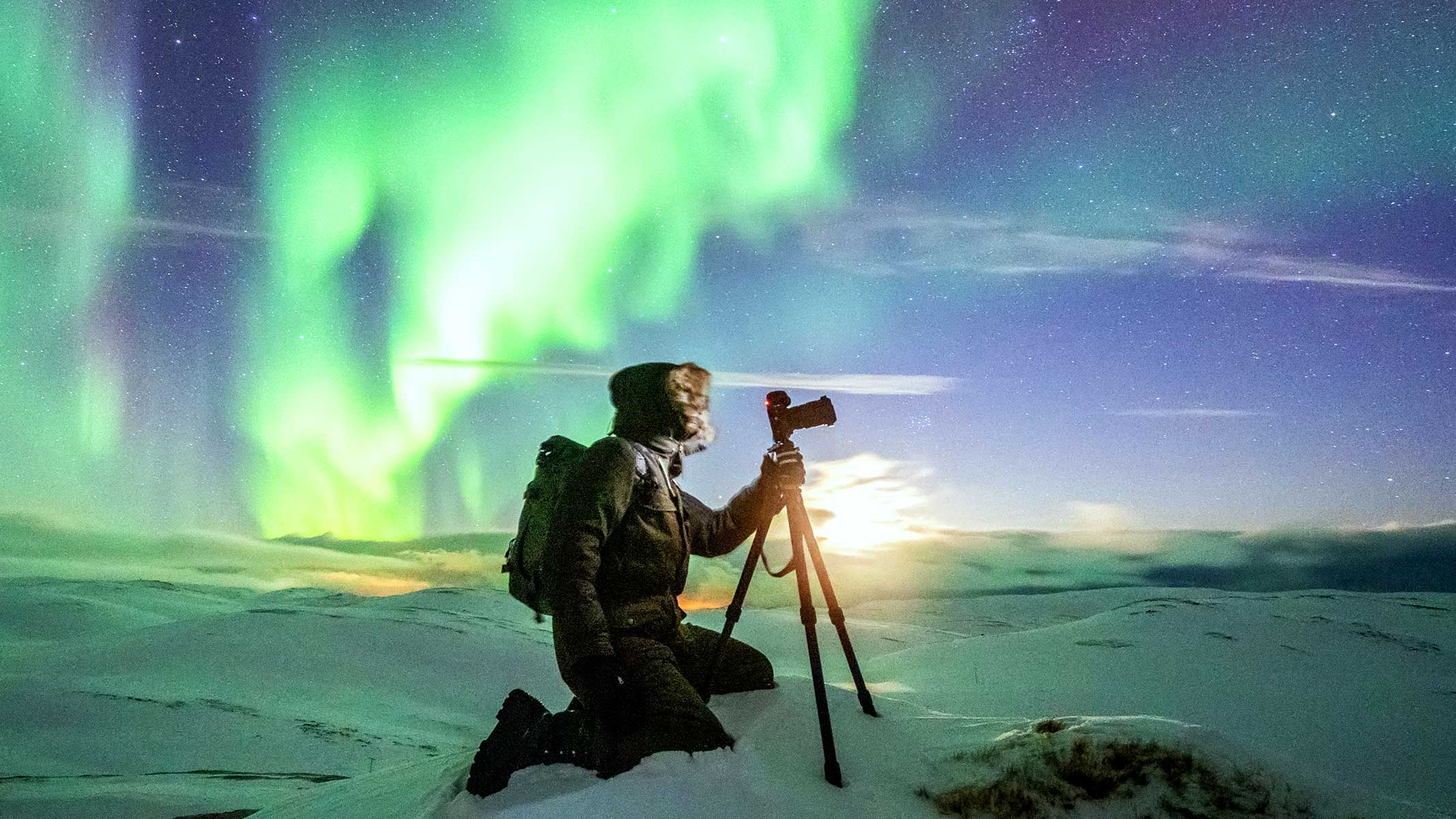
If you're shooting at night or in colder weather, it’s not enough to just keep yourself warm, you’ve got to think about your camera, too. If you’re working outside for long periods, it’s essential that you keep moisture at bay with one of the best lens heaters to prevent fogging and the damp that could have a long-term impact on your camera.
The good news is that, unlike some astro accessories, the best lens heaters won't break the bank; they're easy to install and surprisingly cheap. Just wrap them around your camera lens and say goodbye to fogging. And if you're looking to upgrade other aspects of your gear, our expert reviewers have also rounded up the best lenses for astrophotography and the best camera backpacks. Keep an eye on gear prices as we run up to Black Friday, which is coming this week.
The quick list
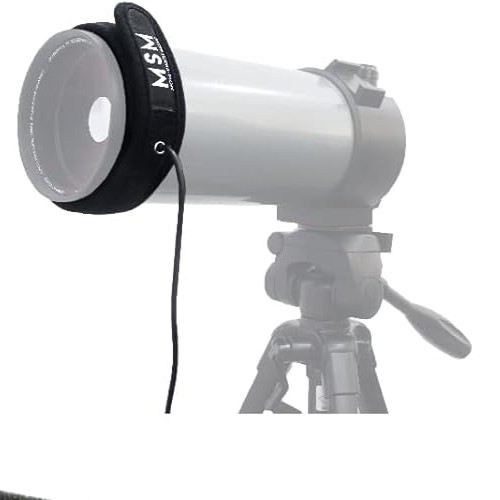
Best overall
This is a great choice if you need a fast-acting lens warmer with some seriously good tech packed inside.
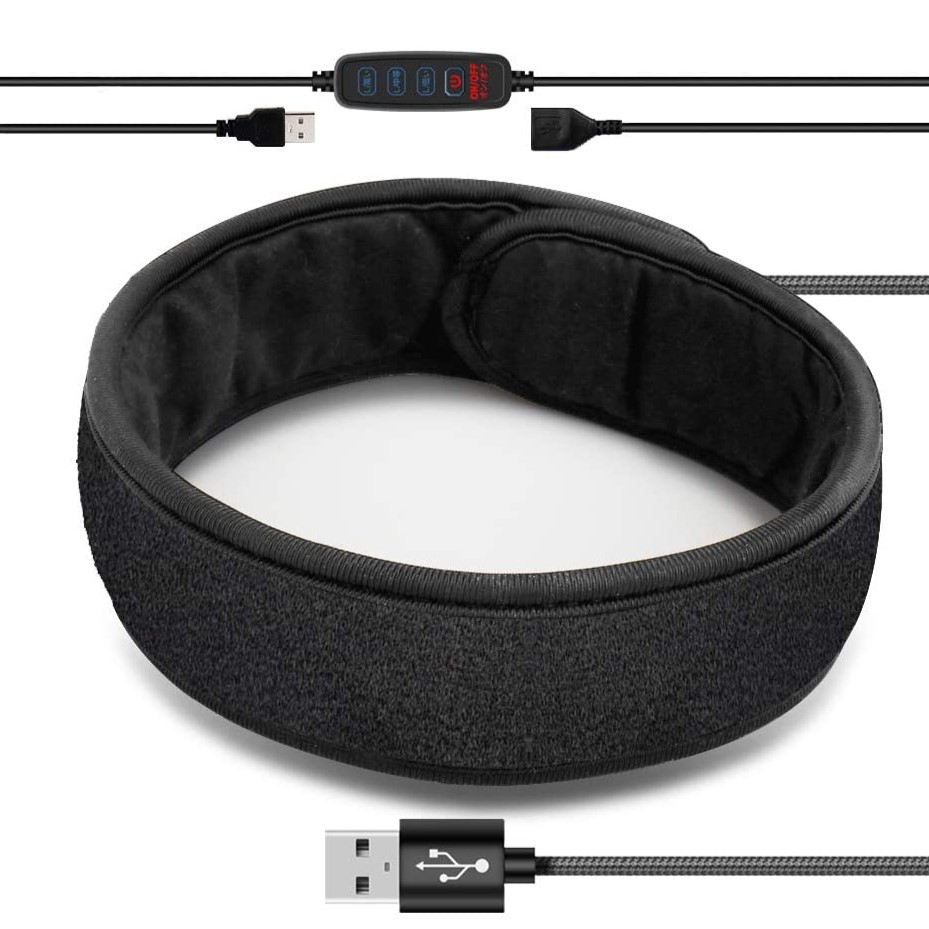
Best for shorter lenses
The COOWOO lens heater isn't the widest lens heater around but it's a solid performer, making it great for shorter lenses.
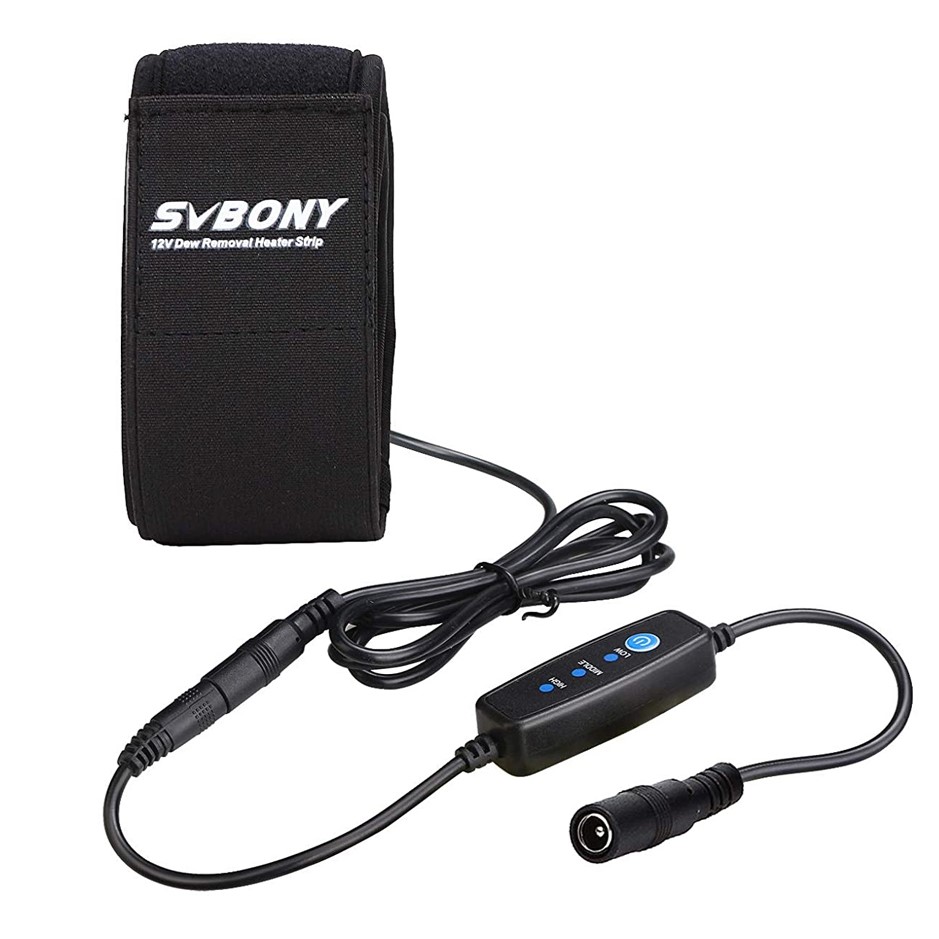
Best for versatility
At 72cm long, the Svbony SV192 lens warmer is a great choice for the girthiest lenses in your collection, and it can be adjusted to fit most sizes.
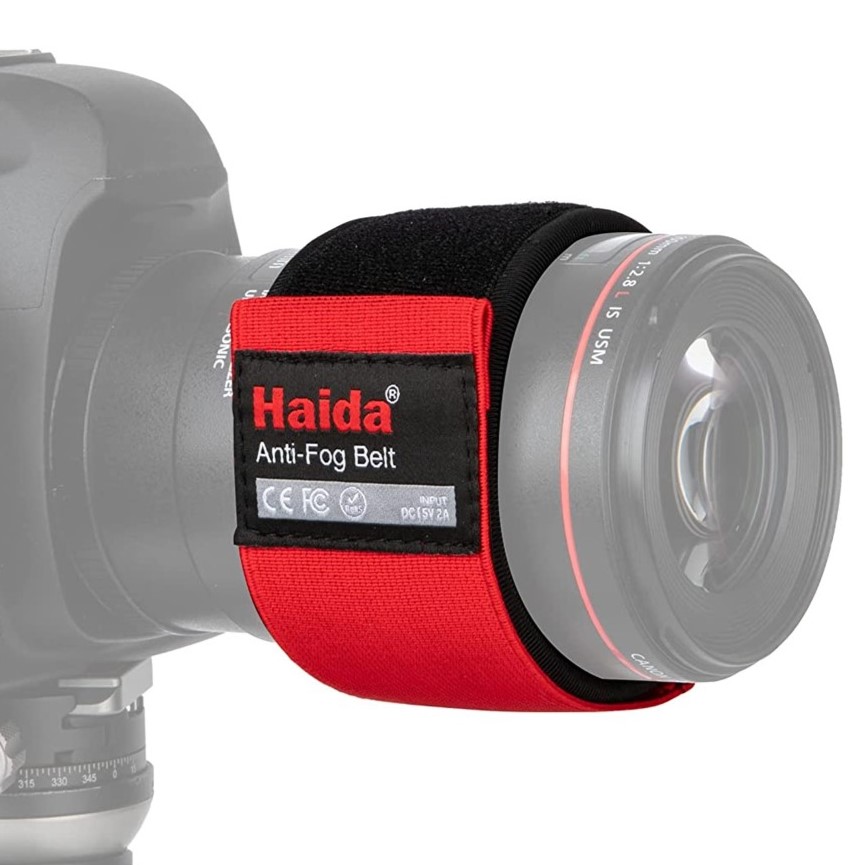
Best all-rounder
This is a great quality lens heater that should fit most lenses, but a poorly placed LED indicator could ruin your night vision if you're not cautious.
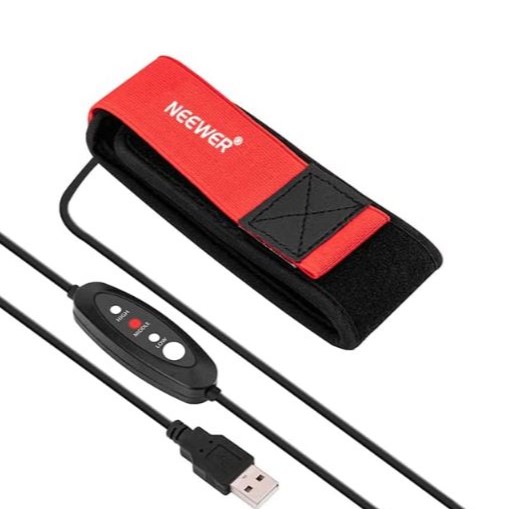
Best multi-purpose heater
The NEEWER USB lens heater does a great job of warming up your lens — but it's also great for your coffee cup, or even your arms.
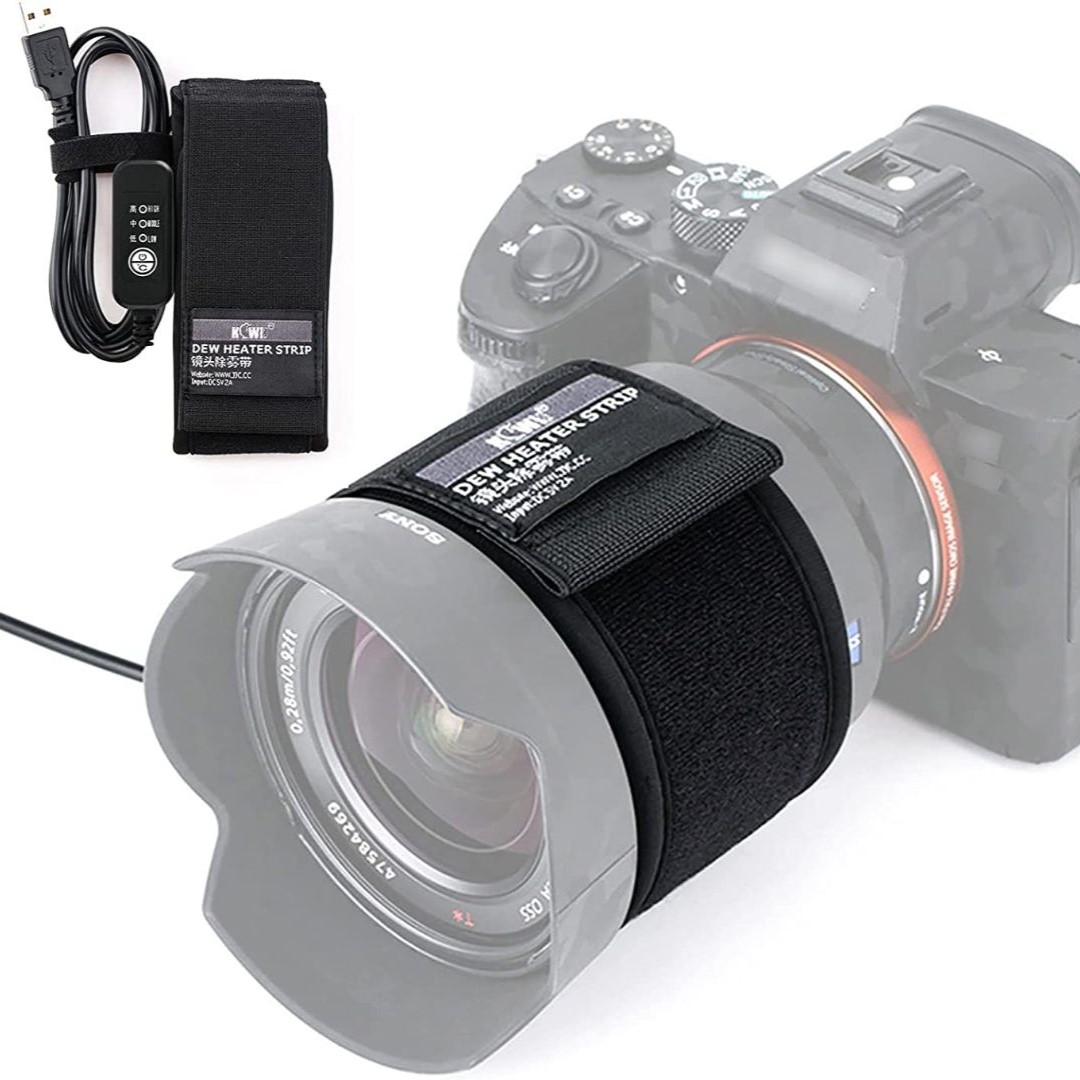
Best for slim lenses
This isn't the longest heater, so it's perfect for smaller, slimmer lenses — but its ability to cope in up to -40 degree celsius conditions is astounding.
The best lens heaters we recommend in 2025
Why you can trust Space.com
Best overall
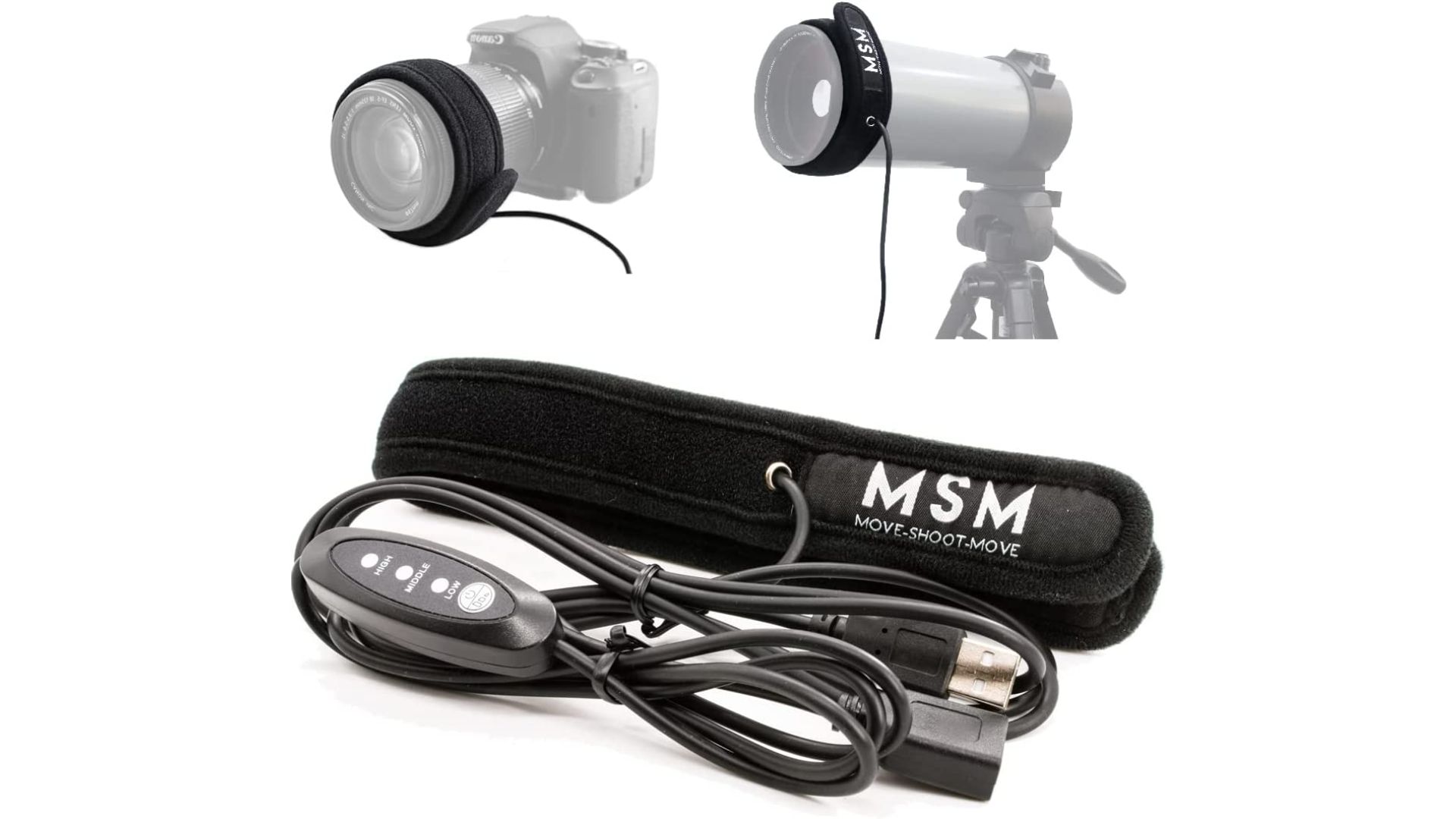
MOVE SHOOT MOVE lens warmer
Our expert review:
Specifications
Reasons to buy
Reasons to avoid
✅ You need incremental heat levels: The heat output can be adjusted to adjust to the weather.
❌ You need USB-C: This lens heater has a USB-A connector, which is quickly becoming outdated.
🔎 The MOVE SHOOT MOVE lens warmer is an excellent lens heater that should suit just about any situation. ★★★★½
Packing in smart technology and excellent functionality, we think the MOVE SHOOT MOVE lens warmer is the best on the market.
This lens warmer works all the way down to temperatures of -25 degrees Celsius, so you know you're covered even on the coldest of nights. There are multiple heat settings on the MOVE SHOOT MOVE lens warmer too, letting you adjust how much heat it kicks out depending on how cold it is. It's perfect for maintaining the ideal temperature.
The lens warmer itself is made of neoprene, which thanks to its waterproof properties is great for keeping the lens dry. It's also excellent at preventing heat loss, ensuring all heat from the warmer stays with the lens.
The MOVE SHOOT MOVE lens warmer uses a USB-A cable to charge. It's a little outdated now, but many of the lens heaters featured on this list haven't yet updated to USB-C. It's not a deal-breaker though — just make sure you pick up the correct cable when packing your gear!
Attributes | Notes |
|---|---|
Design | Made of Neoprene to keep the lens dry and prevent heat loss |
Performance | Works up to -25 degrees Celsius |
Functionality | Charges via USB-A |
Best for shorter lenses
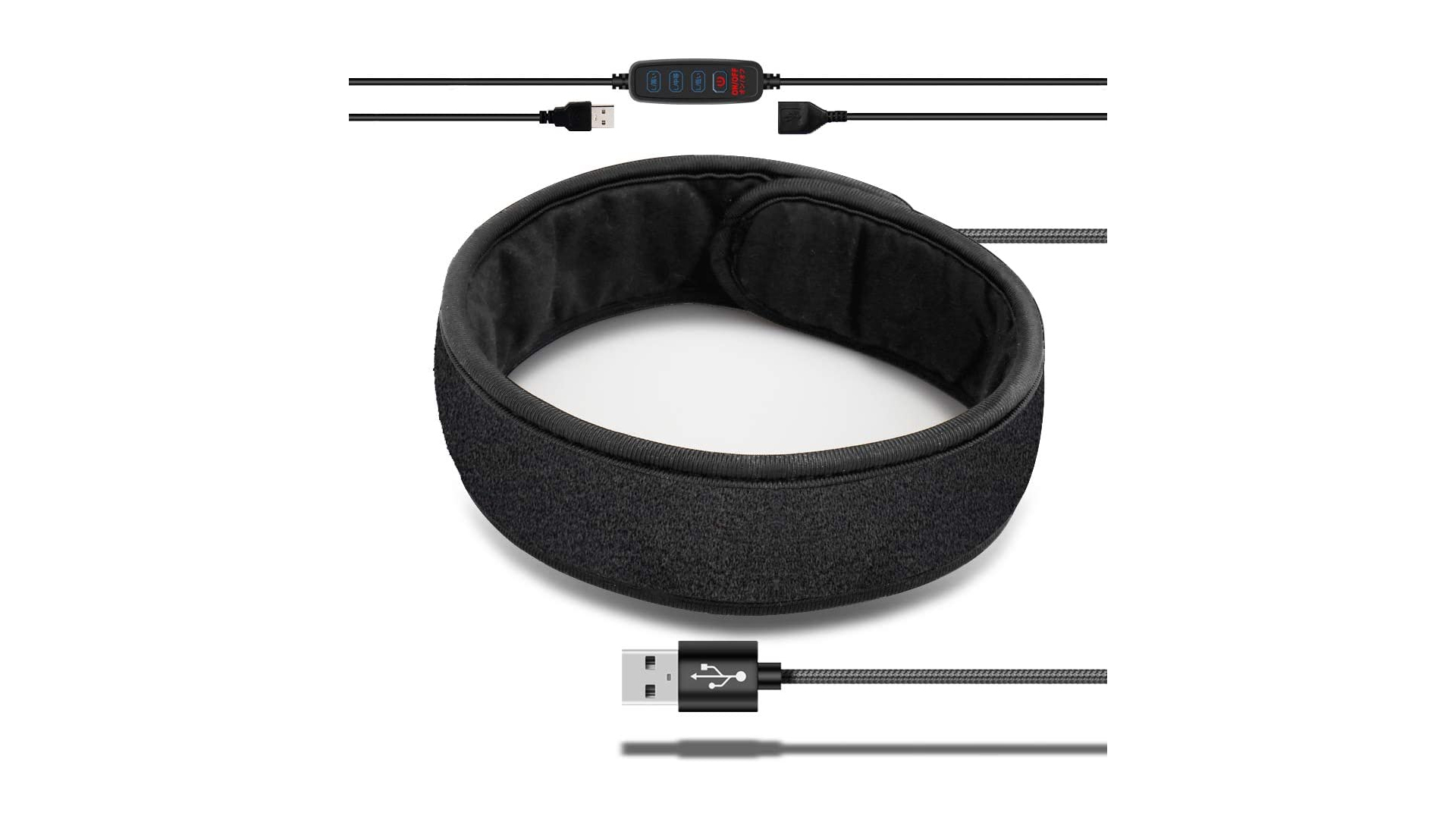
COOWOO lens heater with temperature regulator strip
Our expert review:
Specifications
Reasons to buy
Reasons to avoid
✅ You want something to fit most lenses: It's a nice, long band that should go around most lenses.
❌ You want a wider warmer: This is fairly narrow, so we wouldn't recommend it for very long lenses.
🔎 The COOWOO lens heater is long enough to fit around most lenses, although its narrow width means we wouldn't recommend it for huge zoom lenses. ★★★★
The COOWOO lens heater is made of a simple Neoprene band that sits around your lens. It's a little narrower than other lens heaters we've featured on this list, however, so we think it's better suited to shorter lenses rather than your longest zoom lenses.
It will fit on any lens with a circumference of 41cm and below, however, and the band holds itself in place with velcro, making it very easy to fit in place on a lens. There's a temperature regulator on the power cable that lets you adjust between three settings (low, medium and high) to adjust how much heat reaches your lens.
The COOWOO lens heater is charged via a USB power cable, and you can also run it continuously by using a rechargeable power pack. We'd definitely recommend packing a mobile power source with you if you plan to be shooting all night as it means you don't have to worry about losing heat.
Attributes | Notes |
|---|---|
Design | Lengthy but very narrow, so best suited to shorter lenses |
Performance | Has three heat settings (low, medium and high) |
Functionality | USB charging |
Best for versatility
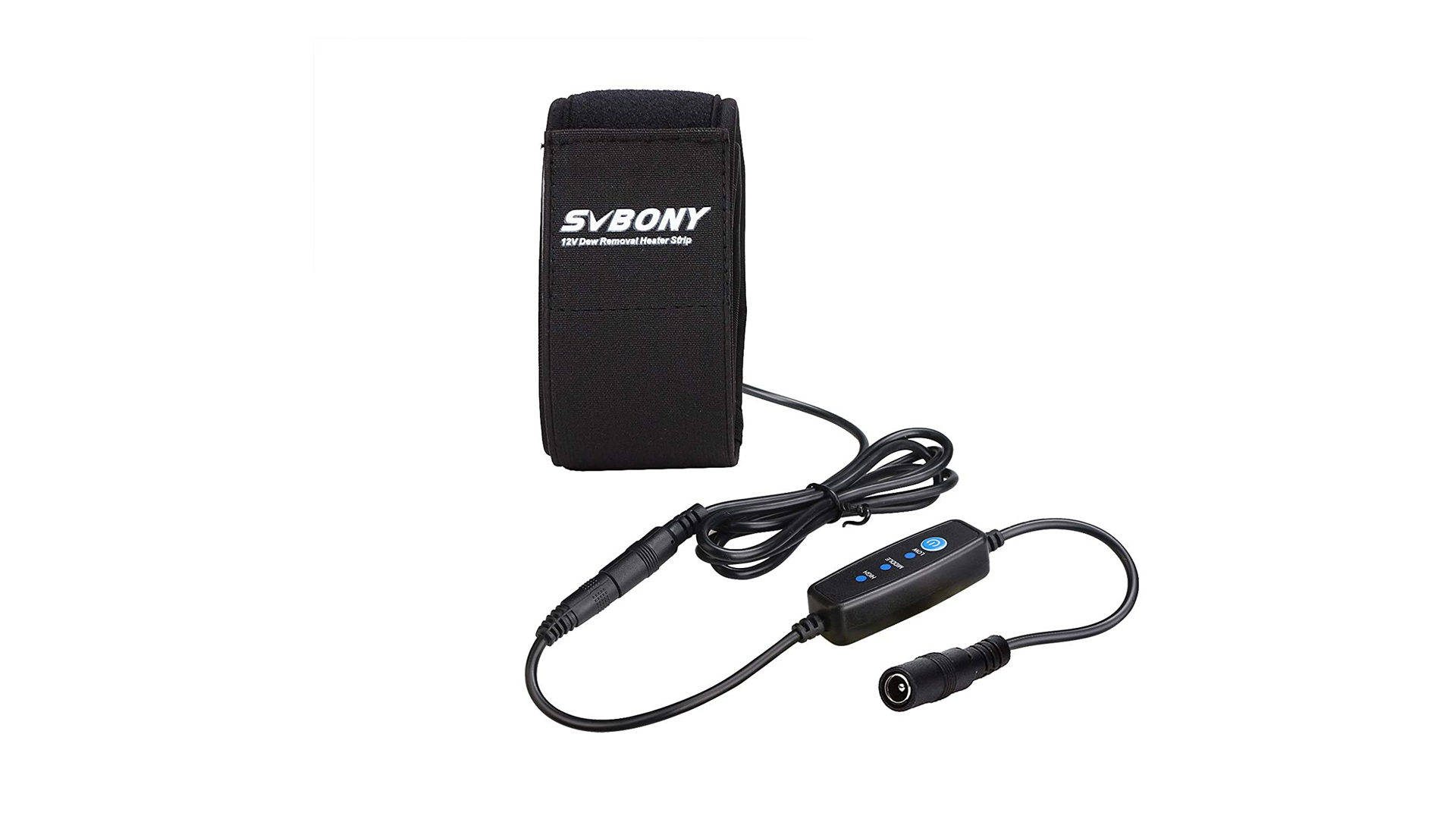
Svbony SV192 lens warmer
Our expert review:
Specifications
Reasons to buy
Reasons to avoid
✅ You want something that heats up quickly: The SVBONY SV192 lens warmer has aluminum alloy elements which heat up very fast.
❌ You want something ultra sleek: With a tank to draw power from, this is the bulkiest of the lens heaters on our list.
🔎 The SVBONY SV192 heats up fast, can last a long time thanks to its power bank and fits on just about every lens. It's a winner. ★★★★
If you want a lens heater that can fit just about any lens, look no further than the SVBONY SV192 lens heater. With its 72cm-long strap, it's one of the longest lens heaters on this list, making it suited for wrapping around even the largest lenses. We've found it works with telescopes, too.
Rather than charging via USB, the SVBONY SV192 draws its power from a power tank, which outputs 1.6 to 1.8A. It means it lasts a long time, but there's a bit of extra bulk involved, so bear that in mind.
Like other lens heaters, this one can be adjusted to suit the temperature you need at any given moment. There's a low, medium and a high setting which can be changed easily via a switch on the power cable.
Perhaps the most impressive thing about the SVBONY SV192 is how quickly and evenly it heats up: It has aluminum heating elements inside, which will heat up in a matter of seconds.
It's worth noting that a cheaper version of this lens heater is available, but it's shorter, meaning it won't fit around every lens. We think it's worth paying a little extra for that versatility.
Attributes | Notes |
|---|---|
Design | Draws power from a power bank. |
Performance | Aluminum heating elements mean it heats up very quickly. |
Functionality | Long enough to fit even the largest lenses. |
Best all-rounder
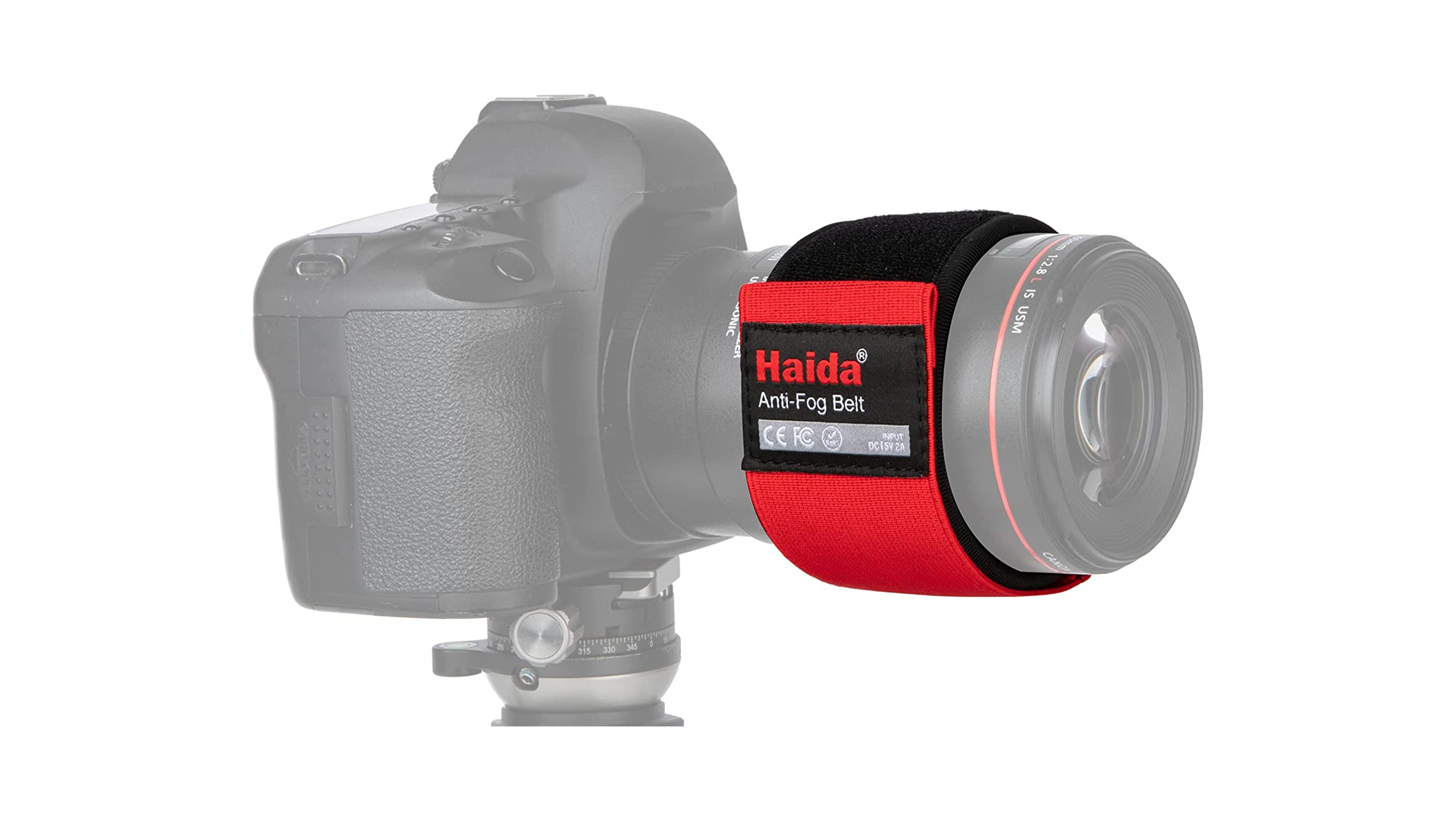
Haida HD4635 lens heater and anti-fog belt
Our expert review:
Specifications
Reasons to buy
Reasons to avoid
✅ You want something easy to use: It's as simple as velcroing it around your camera.
❌ You've got a very large lens: It fits camera lenses with a diameter of 110mm or less.
🔎 The Haida 4635 lens heater is a great all-rounder, but be wary of its LED indicator that can ruin your night vision. ★★★½
The Haida 4635 lens heater and anti-fog belt is a great choice for most astrophotographers. We think it looks great, and it's easy to fit on just about any lens thanks to its simple velcro fastening. The only downside is it's a little on the short side: It can fit any lens that has a diameter of 110mm or less, so if your lenses are larger you'll be best looking elsewhere.
The Haida 4635 lens heater is made from graphene, which Haida says helps the belt to heat up quickly. That's ideal, because when you're out in the cold you don't want to be waiting around too long for the heat to kick in.
There's one very big downside to the Haida 4635, however. It has a LED indicator light on the side, which indicates the heater is working. While it's useful to know everything's in working order, it's likely to interfere with your night vision. Thankfully, it's easily blocked or shielded — and you shouldn't let that put you off too much, because otherwise this is a very decent lens heater.
Attributes | Notes |
|---|---|
Design | Poorly thought-out LED indicator could ruin your night vision. |
Performance | Heats up quickly and very easy to use. |
Functionality | Suitable to use on camera lenses with a diameter of 110mm or less. |
Best multi-purpose heater
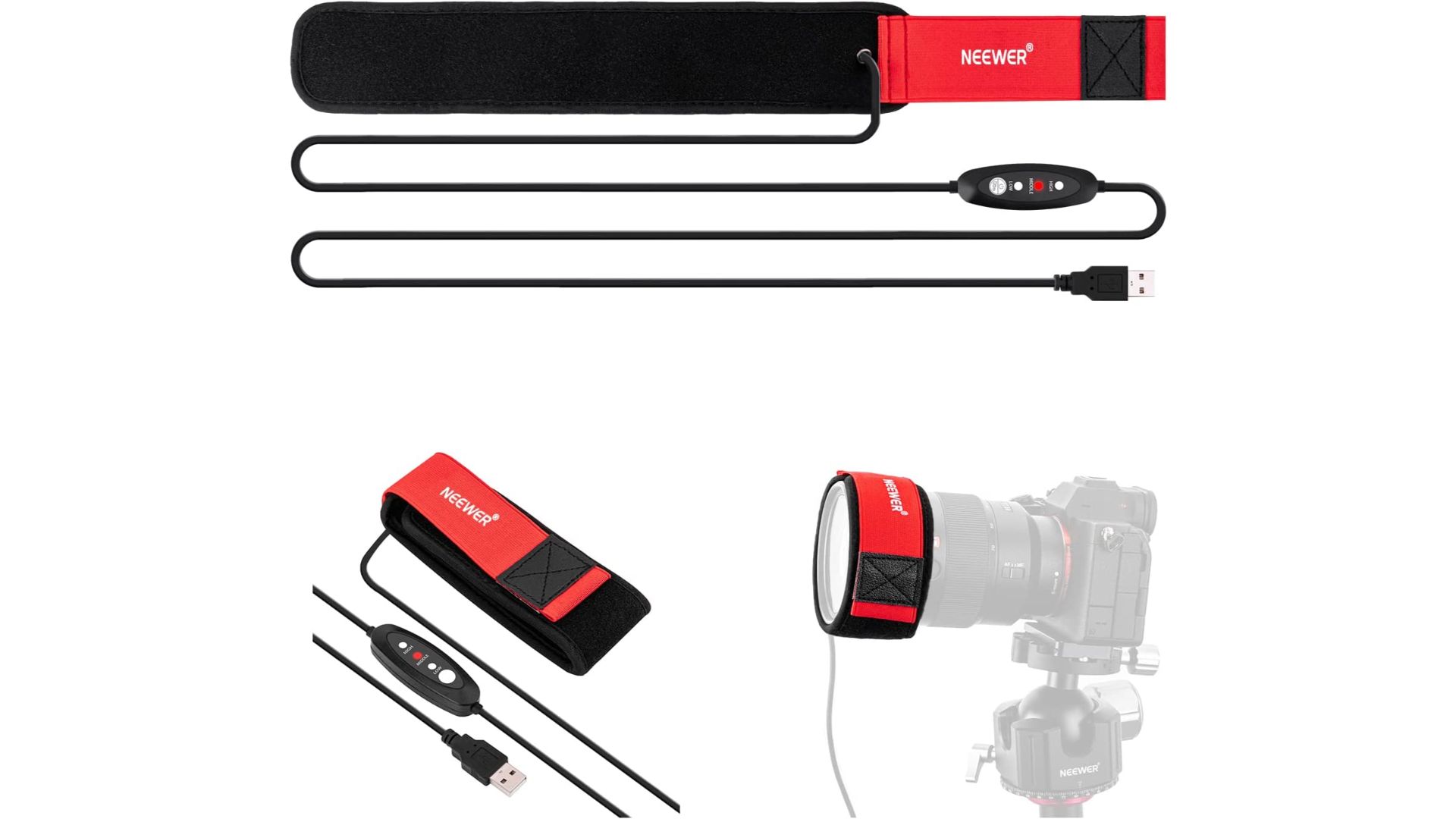
NEEWER USB lens heater
Our expert review:
Specifications
Reasons to buy
Reasons to avoid
✅ You're on a budget: This is very inexpensive, and a great choice for beginners.
❌ You need an extra-long power cable: At 1.5m, it's not the longest out there.
🔎The NEEWER USB lens heater is a very effective and inexpensive way to heat up your lens. It's a great all-rounder and perfect for newcomers. ★★★★
We don't really have anything bad to say about the NEEWER USB lens heater. It's inexpensive, easy to fit to a lens and can be fully adjusted to use on a whole range of lens sizes. What more could you want?
This lens heater fits on any lens (or even telescopes) up to 400 millimeters in circumference, which makes it very versatile indeed. And since it's fully adjustable, it's great to use on smaller lenses, too.
What's perhaps most versatile, though, is that you don't have to stick to using the NEEWER USB lens heater on your lens. NEEWER itself highlights that it can be used to heat up coffee cups, or even warm up your arms and legs in the cold. Nifty!
As most competitors, this lens heaters has three temperature modes (high mode: 55-65 degrees Celsius, middle mode: 45-55 degrees Celsius, low mode: 35-45 degrees Celsius). It's rechargeable thanks to a USB cable, so you can charge it on the go with a power bank or plug it into a power source.
Attributes | Notes |
|---|---|
Design | Simple, adjustable strap design |
Performance | Three heat settings (low, medium, high) |
Functionality | NEEWER suggests using it to warm up coffee cups, and even your arms and legs. |
Best for slim lenses

KIWIFOTOS USB lens warmer
Our expert review:
Specifications
Reasons to buy
Reasons to avoid
✅ You want to use in extreme temperature: This lens warmer can withstand temperatures as low as -40 degrees Celsius.
❌ You want to use on larger lenses: It's only suitable for lenses up to 3.15 inches in diameter.
🔎 The KIWIFOTOS USB lens warmer is a very powerful lens warmer, capable of operating in temperatures all the way down to -40 degrees Celsius, but it has a rather short band that means it's only suitable for slimmer lenses. ★★★
The KIWIFOTOS USB lens warmer is particularly impressive in that it can operate in temperatures as low as -40 degrees Celsius. If you're planning on shooting the stars out in the Arctic, then, this is the lens heater to take with you.
There are three temperature modes on this lens heater, allowing you to quickly and easily change between high, medium and low heat output.
We particularly like that the KIWIFOTOS USB lens warmer comes with its own storage pouch, which makes it very easy to travel with. Like most lens warmers, it can be charged via a USB power source, and it's best used with something like a portable battery pack so you can ensure you've got constant power, particularly if you're in extremely cold conditions.
There is one downside to the KIWIFOTOS lens warmer, though. It's a little on the short side, so we only recommend using it with thinner lenses. It will fit a lens up to 3.15 inches in diameter, so if you want something to fit a larger lens, you'll have to look elsewhere.
Attributes | Notes |
|---|---|
Design | Fairly short, suitable for lenses 3.15 inches in diameter or less. |
Performance | Can operate in temperatures all the way down to -40 degrees Celsius. |
Functionality | Comes with a storage pouch. |
What to look for in a lens heater
There is a wide choice of lens heaters available out there, so it can be hard to make sense of all the features. We've rounded up the most important things to look out for when choosing a lens heater below.
First off, you'll want to think about how cold the environments you shoot in are; some lens heaters are better at coping with extreme temperatures, some as low as -40 degrees Celsius. Most lens warmers come with more than one temperature setting so you can adjust it according to your shooting location, too.
Another important factor to consider is the charging method. Most lens heaters are chargeable with a USB-A cable, which can either be plugged into a portable battery or into a plug head and into the mains.
Obviously, you'll want to keep your budget in mind. Lens heaters come at a variety of price points, from some more premium ones with a few bells and whistles to slightly more budget-friendly ones which will still do the job reliably. Some more expensive lens heaters are made from premium materials such as neoprene, which helps traps heat and keeps your lens warmer.
Lens heaters also come in a variety of sizes, so depending on how large your lens is, you'll want to look at the specifications to see how the heaters fit.
Update log
Editor's note 4/22/25: Updated to include this month's new moon and planetary alignment in intro.
Breaking space news, the latest updates on rocket launches, skywatching events and more!

Ian has been a journalist for over 20 years. He's written for magazines and websites on subjects such as astronomy, quantum physics, keeping fish, PC hardware, photo editing and gardening. Ian was also editor of Windows Help and Advice magazine and the Discover Science bookazines. In his spare time he has a pet tortoise and grows his own vegetables, but wishes he had more time for photography.
- Chris McMullenContributing Writer
- Kim SnaithFreelance contributor
- Harry BennettE-commerce Staff Writer
